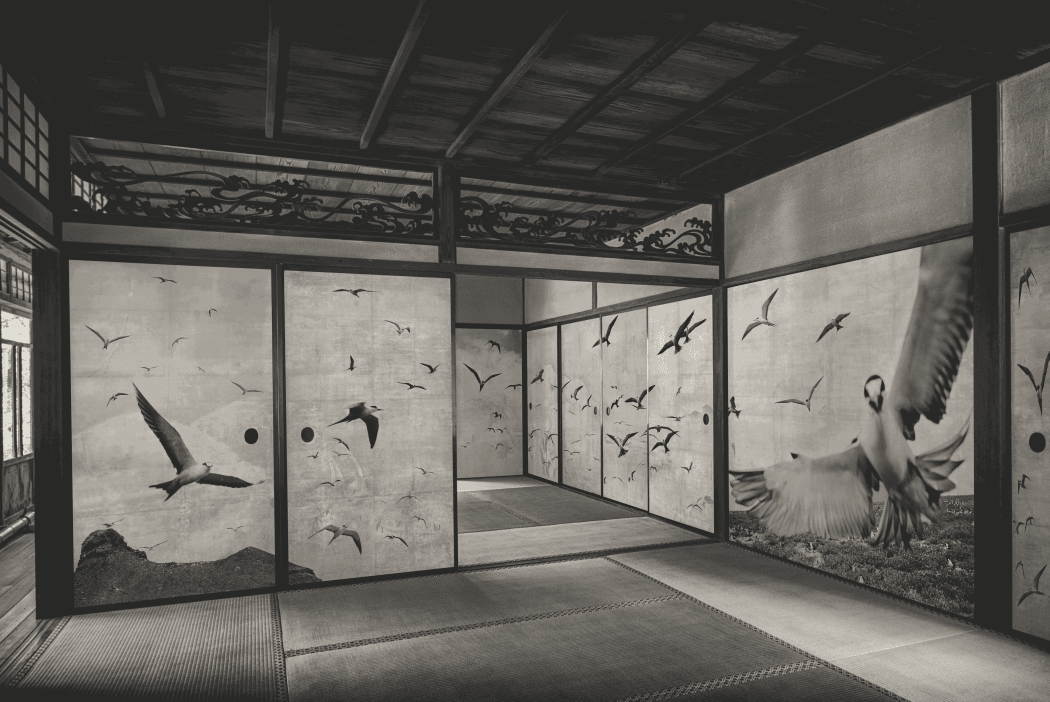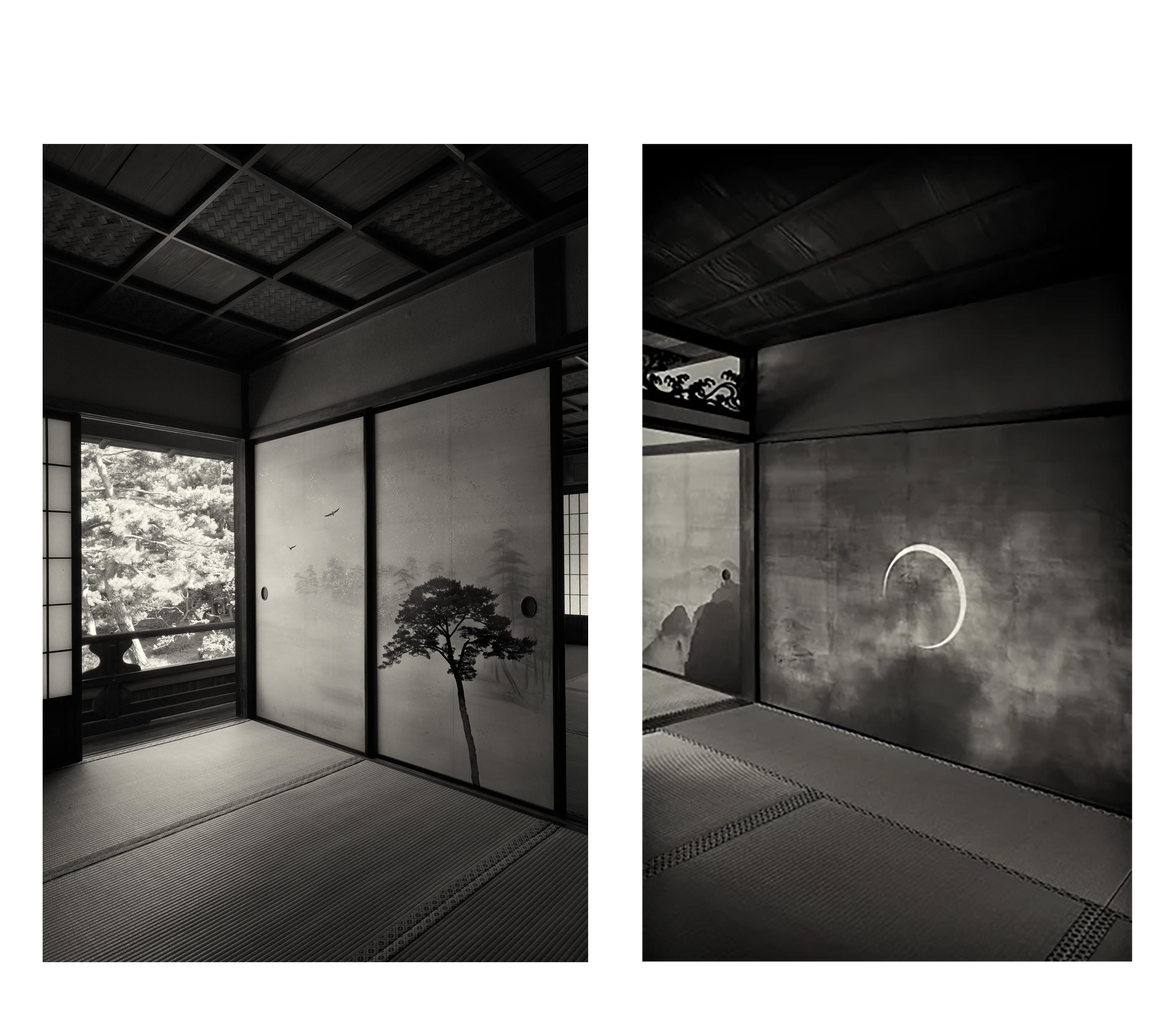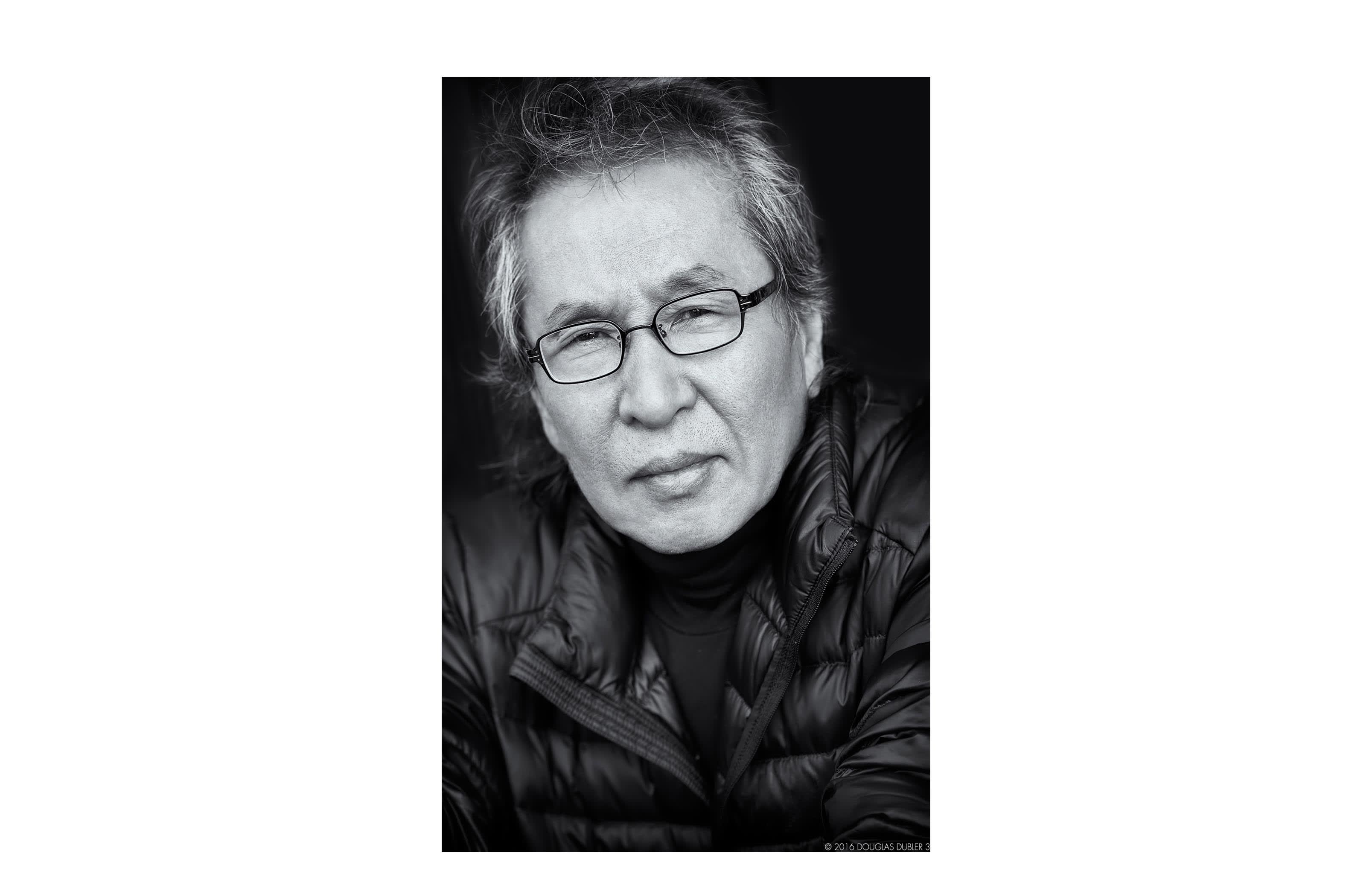
Flocking Birds - 群鳥, 2016
Rarely do we encounter a photographer as playful as Wakasugi.In his late twenties, he stumbled upon the camera during a career transition. His curiosity knows no bounds, exploring new technologies, collaborations, and tapping into the wisdom of history. Photographs captured during everyday escapes find new life as historic Japanese sliding door paintings. Whether in color or black-and-white, digital or film, he curates the best expression for each moment, calmly choosing like a curator.
The more we learn, the more we want to hear the stories behind his next work and all of his creations.

牡丹 - Peony (Japan) , 2021
Q: Please tell me about how you got started with photography
I didn't enjoy my job in my late twenties and started looking for something new. I bought a camera and started taking pictures, which I found a passion since then.
Q: Your work often features unique choices like the Tottori Nageire-dō or Shangri-La, and it feels like you're drawn to remote and hard-to-reach places with powerful messages. How do you decide on your themes? Or at what point in your life did you encounter these significant themes?
Traveling around the world took me away from the worries in my daily life. The unique destinations let me immerse myself in another world. That is why my work and topic revolve around the Hinterland, which includes the Himalayas, China's interior, isolated islands in the South Pacific, and Patagonia.

Q: I see your Fusuma Photography series as a way of capturing "photographs of photographs." Could you tell me about how you came up with this idea and what led you to adopt this approach?
I've always admired Japanese culture (fusuma-e, hanging scrolls, folding screens, and so on), and I intended to try my hand at it. At the time, I came across "Rinshunkaku" in Sankeien Garden in Yokohama. When I went there, I was immediately drawn to it and was able to get permission to shoot there.
The "Fusuma Photography" work was inspired by Junichiro Tanizaki's novel "In Praise of Shadows."
The photographs of landscapes, including the fusuma paintings of Rinshunkaku, are inset with the landscapes photographed on the trip as fusuma paintings.
The work is a digital fusion of two worlds, attempting to find a new landscape transcending time and space.
Since ancient times, Japanese people have delicately felt the changing seasons and perceived the beauty and transience of nature in their daily lives. This forgotten aspect of the Japanese spirit is gradually awakened by creating artwork.

"The work I am creating is based on 'Noh,' a traditional Japanese art form. Using digital mediums, I am challenging the aesthetic of 'yugen,' which is the profound and mysterious beauty unique to Japanese tradition.

Q: Your artworks always surprise people with fresh and unique choices. It seems like your playful and adventurous personality reflects in the destinations you choose for your artistic explorations. Have you been influenced by individuals who embody such qualities in your creative journey?
I get inspired by various artists and creators who have made a lasting impact on me. In painting, I deeply admire Tanyu Kano, Tōhaku Hasegawa, and Korin Ogata's profound contributions to Japanese art. Zeami Motokiyo's transformative work in Noh theater and emphasis on spiritual depth greatly inspire me. Jun'ichirō Tanizaki's literature, exploring human psychology and aesthetics, is captivating. Beyond traditional arts, I'm intrigued by Douglas Droupler's innovative digital photography techniques that push the boundaries of visual storytelling. I enjoyed and got inspired by his approach through our past collaboration.
